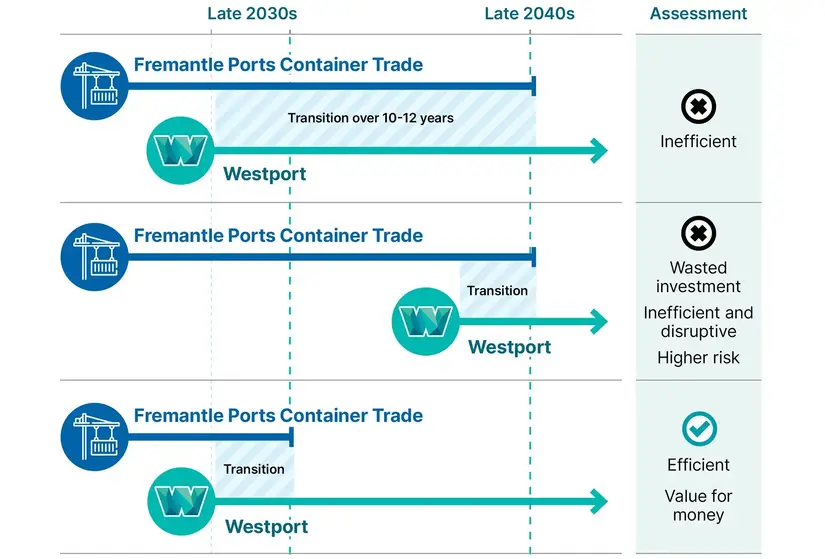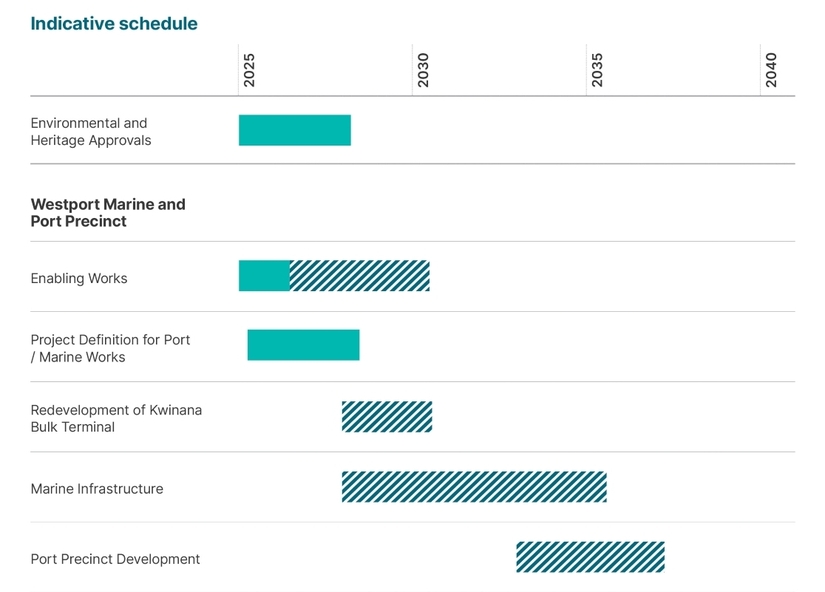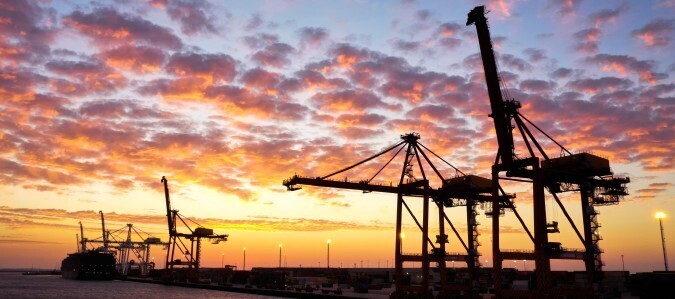Westport is planning to move container trade from Fremantle to Kwinana in the late 2030’s.
When considering the right timing to move container trade to Kwinana, three options were evaluated to determine what would offer the best value for Western Australia, and ensure no disruption to container trade.
The optimal pathway, and the one we are following, is a one-step transition of container trade from Fremantle to Kwinana in the late 2030’s. It’s expected Fremantle Port will hit capacity around 2038.
All of Westport’s planning is aimed at having the new container port operational by the late 2030’s so the transition - when needed - will happen smoothly and support the continued growth of the Western Australian economy.
Transitioning container trade to Kwinana
Analysis of the capacity of Fremantle Port found that even if its life was extended through costly and disruptive upgrades, it could not be extended beyond 2050. This makes a shift to Kwinana inevitable.
Three options were considered to assess the optimal time for transition from Fremantle, that would maximise container trade efficiency and offer the most value for Western Australia in terms of infrastructure use and spend.
Run two container ports at once for a period of 10 to 12 years.
Invest in Fremantle to extend its capacity until the late 2040’s, following which container trade would transition to Kwinana.
Invest in developing a container port in Kwinana earlier, and transition once around 2040, before Fremantle requires significant renewal of assets.
Recommended timing to transition container trade to Kwinana
Developing and transitioning to Kwinana by the late 2030s will reduce overall infrastructure and development costs by avoiding expensive and short-lived upgrades to Fremantle and improving the entire port and supply chain ecosystem earlier.
This option would allow for a modern and fit-for-purpose supply chain to be developed earlier, enabling larger vessels to be accommodated, boosting the use of freight rail, shifting heavy freight vehicles to suitable corridors, and improving road connections in the southern metropolitan region.
Increasing efficiency of the whole ecosystem would put downward pressure on container trade costs for industry and consumers, from 2040.
Ultimately, it also facilitates the transition of Fremantle port land into vibrant residential and commercial communities and supports the continued growth of strategic industries in our nationally significant Western Trade Coast.
Costs
The government investment required in the new Kwinana container port is estimated to be $7.2 billion in today’s dollars, with prices increasing with inflation over time.
Significant upgrades to the surrounding road and rail network will also be required, with several major enabling projects that will serve not only Westport but wider community needs including for the Western Trade Coast and future defence industries at Henderson.
Detailed economic analysis has shown that the Benefit to Cost Ratio (BCR) of moving container trade to Kwinana by the late 2030s was over 4.02 (with a BCR of over 1.0 demonstrating that the benefits outweigh costs).
Westport’s recommendation is to ‘start now and move once’, shifting container trade to Kwinana in the late 2030s, as this option provides the most benefit to the State, industry and community.
It also increases our ability to achieve important construction synergies with other major projects.




